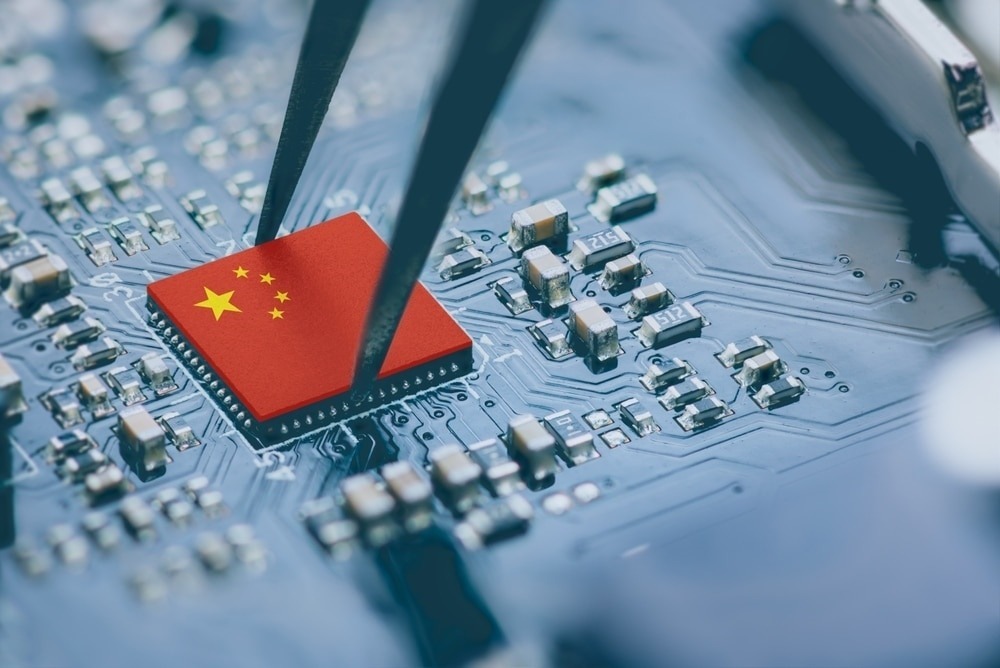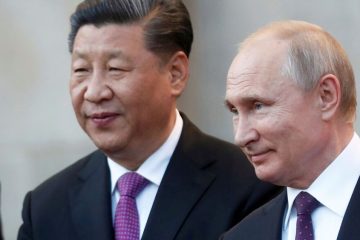Beijing Steps Up Effort to “Delete America” From Its Tech

In an effort to wean itself off American technology, Beijing has stepped up its efforts with a directive called Document 79.
The signs are clearly there for American tech businesses operating in China. It’s also in Document 79, the paper version.
This 2022 Chinese government order is part of a larger attempt to force American technology out of the nation, which some have dubbed “Delete A” (Delete America).
According to those in the know, high-ranking executives and officials were only shown the order and were not permitted to create copies of Document 79 due to its extreme sensitivity. It mandates that, by 2027, state-owned enterprises in the energy, banking, and other industries must have replaced foreign software in their information technology systems.
Computers, operating systems, and software were the hotwires that propelled China’s industrial revolution, and American IT companies had long enjoyed prosperous lives in the country. The officials of China are eager to cut ties with the US because they are worried about the country’s future security and want to become more self-sufficient.
Manufacturers of hardware were the initial targets. Products manufactured in China have been steadily displacing those of major American IT companies like Dell, IBM, and Cisco Systems.
The providers of the software that powers everything from simple office tools to supply-chain management are the intended recipients of Document 79, so called because of the paper’s numbering. One of the few refuges for profitable foreign technology in the nation, the industry is seeing companies like Oracle and Microsoft lose ground.
Chinese leader Xi Jinping has been pushing for years for the country to become self-sufficient in producing grains, oilseeds, and crucial technologies like fighter jets and semiconductors. This endeavor is just one more shot in the long gun. Overarchingly, the plan seeks to strengthen China’s internal supply chains and reduce reliance on Western suppliers of food, raw resources, and energy.
In September 2022, with the United States tightening its grip on chip exports and imposing sanctions on Chinese tech businesses, officials in Beijing released Document 79. Businesses that are owned by the state are required to report every three months on how they are doing in terms of switching from foreign software to Chinese software for HR, business management, and email.
More than sixty of China’s one hundred biggest listed firms are part of the enormous state-owned enterprise sector, which is responsible for issuing the edict.
Requests for comment were not responded to by either the State-Owned Assets Supervision and Administration Commission or the State Council, the national cabinet of the country.
The Chinese government spent more than $6.6 trillion (48 trillion yuan) in 2022. Chinese tech companies can improve their goods and close the technology gap with U.S. rivals by leveraging that purchasing power, according to the guideline.
In accordance with what the Wall Street Journal gathered from statistics and procurement records as well as sources knowledgeable with the subject, state-run enterprises have diligently increased their purchases of local brands, regardless of the quality of the Chinese alternatives. Financial institutions, investment firms, and government agencies like the postal service are among the purchasers.
“China was the land of milk and honey, and intellectual property was the main challenge” in 2006, according to a former U.S. Trade Representative staffer who had dealt with technology talks with the Chinese before. The sense of opportunity seems to be wrong right now. Business owners are just surviving.
The movement to bring technology in-house is called “Xinchuang,” which translates to “IT innovation” with an emphasis on reliable and safe systems. Many Chinese businesses have been cut off from American innovations because to the intensifying tech and trade conflict with Washington, which has increased the urgency of the policy.
During this week’s annual parliamentary sessions in China, Premier Li Qiang reaffirmed the push. Following a 2% rise in funding last year, the Chinese government intends to spend an additional 10%, or some $51 billion, on R&D this year, according to a budget document published on Tuesday.
Rather than promoting international brands, several exhibitors at national trade shows highlight domestic innovations. An adamant vendor at a Nanjing semiconductor equipment stand offered to assist customers in “deleting A” from their supply chain.
More and more, options made in the United States are becoming easier to use. An officer from the area recalls that in 2016, a PC running the KylinOS OS, created by a Chinese firm with ties to the military, required an entire day only to open and close a spreadsheet. In his opinion, the most recent version of KylinOS is about as user-friendly as Windows 7, a 2009 Windows operating system from Microsoft.
Only around six years ago, Western brands were the go-to for government tenders for hardware, semiconductors, and software. Rather than American IT products, many were looking to China by 2023.
The Ningbo customs department in eastern China expressed a preference for Dell and HPE rack servers powered by Intel Xeon CPUs when they were looking to buy rack servers in 2018. Chinese rack servers with Huawei processors were requested by the same agency five years later.
Tsinghua Tongfang, a Beijing-based state-owned tech business, is a typical example of a company that assembles these servers but rarely sells equipment abroad. The main stakeholder of Tongfang is a state-owned enterprise that oversees both the civilian and military nuclear programs in China.
Last year, officials were instructed to utilize Chinese phones for work rather than Apple’s iPhones, and some officials in China’s capital had their foreign-branded PCs replaced with Tongfang phones.
Declining orders
Xi has made it clear time and time again over the last decade that he is committed to technical innovation and that all branches of government and businesses should embrace reliable domestic technology. Former National Security Agency contractor Edward Snowden’s 2013 revelations that the United States had breached Chinese mobile phone communications, colleges, and private firms fortified Xi’s determination. In a more recent statement, Xi advised senior officials to take advantage of China’s market and strengths to overcome obstacles in developing critical software like operating systems.
Revenues for IBM in China have been falling for some time now as the country prioritizes hardware replacement. In 2021, after more than twenty years of operation, it reduced the size of its Beijing-based China research operations.
A former Chinese technological behemoth, Cisco, claimed in 2019 that nationalist purchasing was causing them to lose orders in China to domestic vendors. According to Canalys, the market share of American PC maker Dell in China has dropped to 8% from 50% in the last five years.
According to estimates from database supplier FactSet, Hewlett Packard Enterprise (HPE), which provides servers, storage, and networks, received 14.1% of its revenue from China in 2018. That dropped to 4% by 2023.
It was announced in May that HPE will be selling its 49% interest in the Chinese joint venture. According to a representative, the corporation still sells directly to specific international clients in China and uses its Chinese partner to offer some products to the wider mainland market.
Over the last two years, several software companies have reduced or eliminated their direct operations in the country. These include Salesforce, Adobe, and Citrix parent company Cloud Software Group.
Historically, Microsoft, the largest software provider in the world, had a stranglehold over China’s computer operating systems. According to a Morgan Stanley survey of 135 Chinese CIOs, many of them anticipate a decline in the percentage of company computers running Microsoft’s Windows operating system in the coming three years. Unity Operating System (UOS), which is based on Linux and was co-led by a state-owned business, was anticipated to benefit from the change.
In spite of several high-profile meetings between Microsoft’s top executives and senior Chinese leaders—including co-founder Bill Gates—on topics such as AI cooperation and U.S.-China trade relations, the business has reduced its offerings in China. China accounted for a meager 1.5% of Microsoft’s total sales, according to President Brad Smith, who made the statement during a subcommittee hearing in September of last year. In the most recent fiscal year, the business recorded $212 billion in sales.
No remark was given by Microsoft.
Reports indicate that several state-owned corporations are taking their time to address concerns about the stability and performance of domestic alternatives to foreign IT goods that are crucial to their operations.
However, Chinese technology is not only becoming more sophisticated, but it is also deeply integrated into the local ecology. Chinese companies increasingly rely on the ubiquitous chat messaging app WeChat rather than email, and local software providers have made it possible for their products to work together.
Privately held businesses are feeling the effects of the buy local policy and are more likely to purchase software developed in the United States, according to a CIO study by Morgan Stanley.
Change at home
Chinese businesses have been able to close the gap thanks in part to a trend toward data hosting and management in the cloud rather than on-premises servers. The 2010 Chinese database software market was controlled by Oracle, IBM, and Microsoft. In the time after, Chinese tech giants like Huawei and Alibaba began developing database management technologies to displace their American counterparts.
In 2022, Chinese vendors captured over half of the Chinese market, with a total value of $6.3 billion, and this trend shows no signs of slowing down, according to Gartner. According to tenders reviewed by the Journal, an increasing number of enterprises and institutions with ties to the state have chosen Huawei’s databases over the past few years.
According to Yang Bing, CEO of OceanBase, a Chinese database provider, during a conference in Beijing in November, Chinese financial institutions such as banks, brokerages, and insurers have expedited the acquisition of domestic databases. In 2016, Ant Group and Alibaba’s finance subsidiary OceanBase supplanted Oracle databases.
Chinese national champions like Huawei and more specialized enterprises are displacing Western companies. A Shanghai-listed company with a market cap of $6 billion, Yonyou Network Technology offers software for HR, AP, and treasury management.
Data from the Chinese researcher Huaon Research Institute shows that Yonyou has been acquiring users while Oracle and SAP have been losing ground. Oracle and SAP used to control over 50% of the market. Yonyou has captured 40% of the market by 2021, making it the biggest player.
Opportunities do exist in China for Western enterprises, particularly in areas of higher technology where China is still behind and in sales to international corporations with operations in China.
According to experts, Western companies may continue to fall further behind in China’s market as a result of preferential demand from the country’s public sector.
The benefit of local providers would lie in the fact that software development necessitates constant customer feedback, according to Han Lin, China president of the Asia Group, a business advising group.








